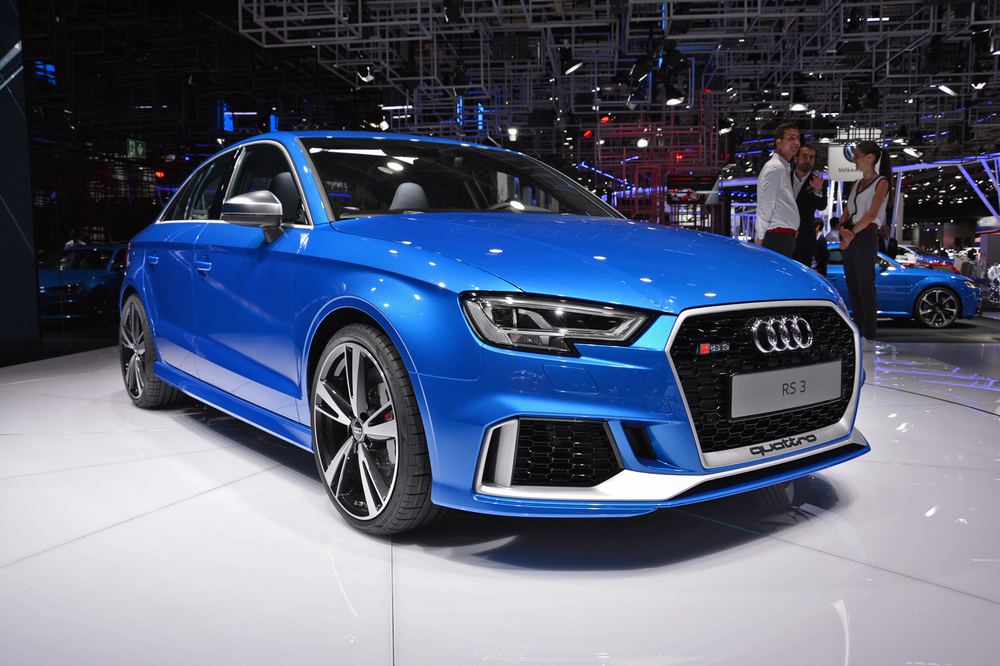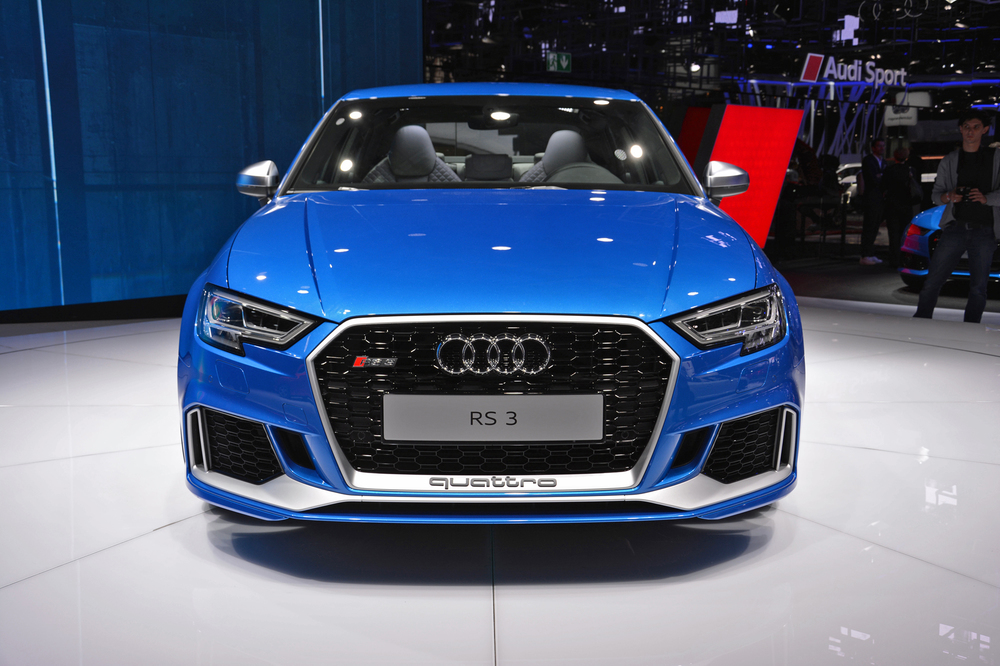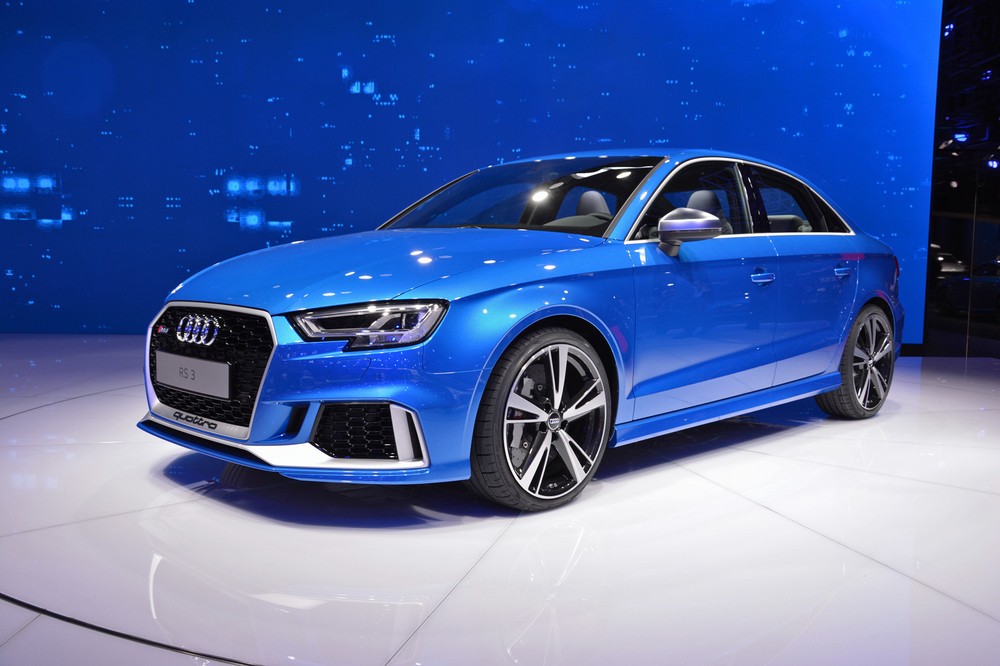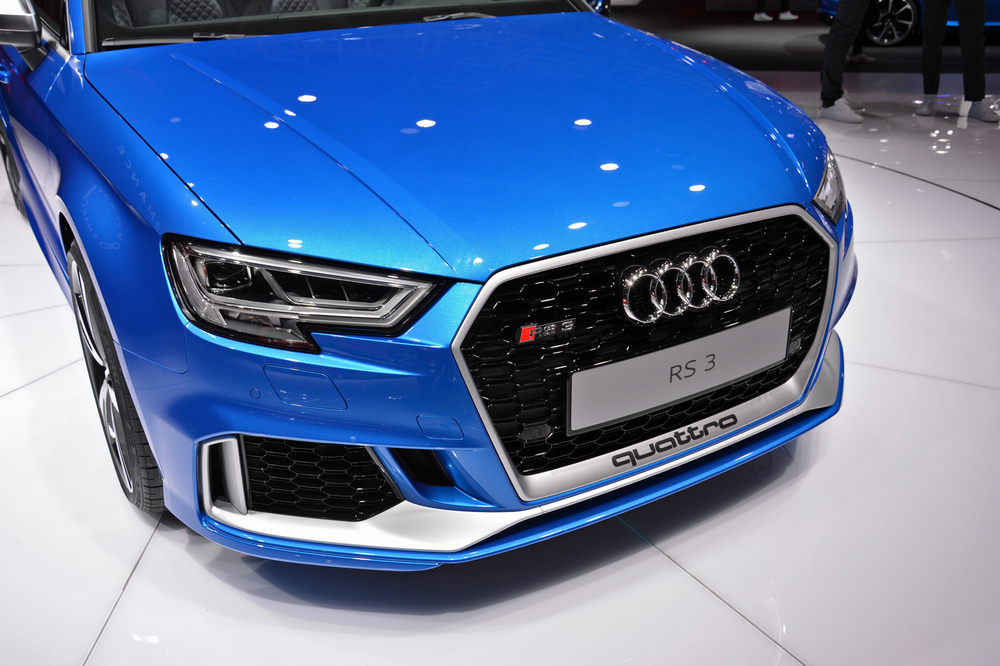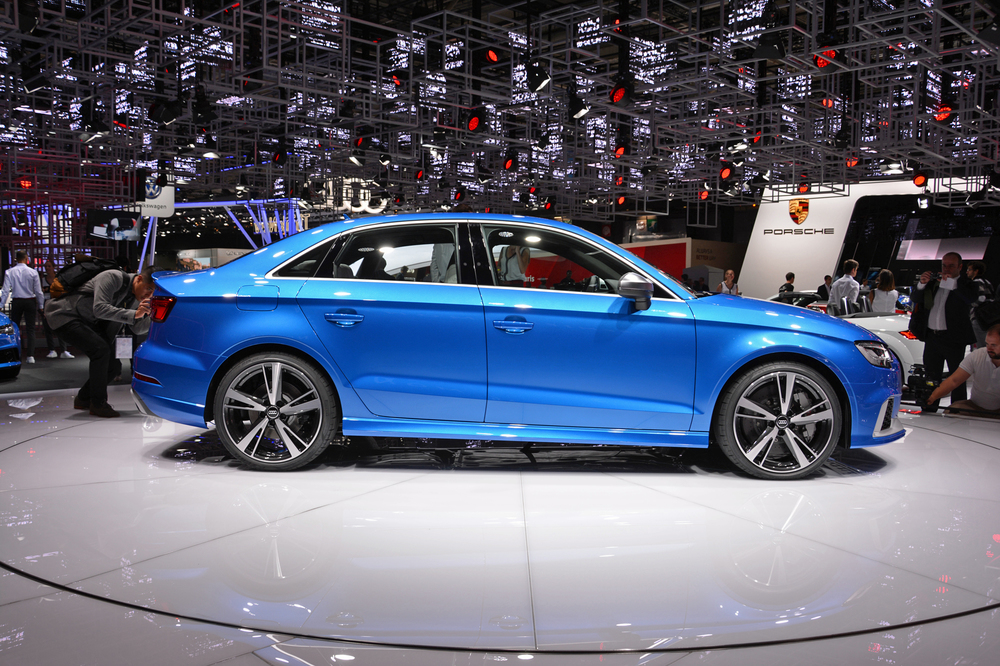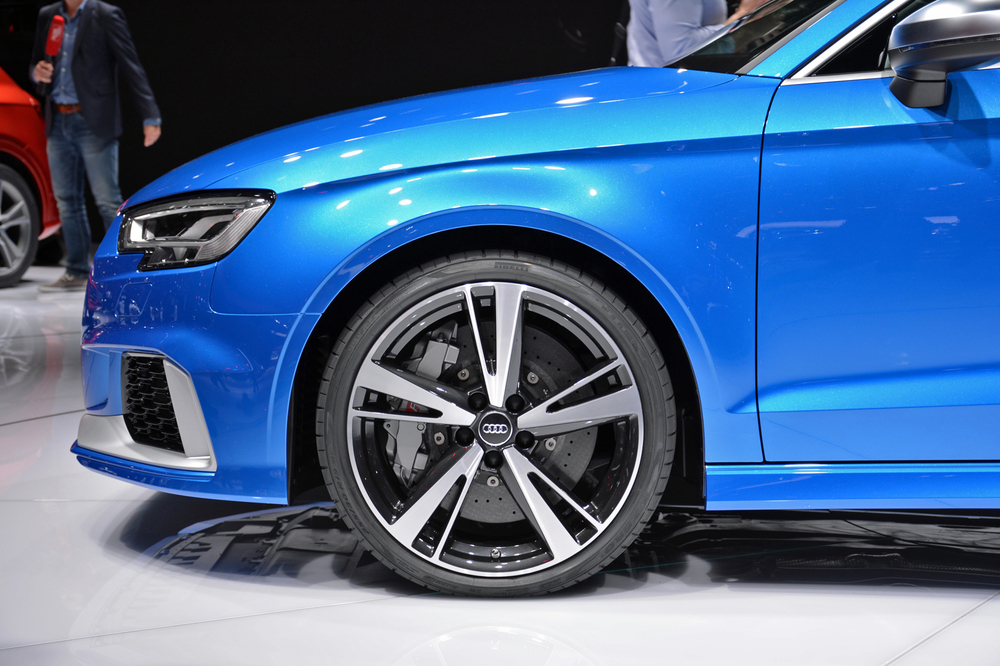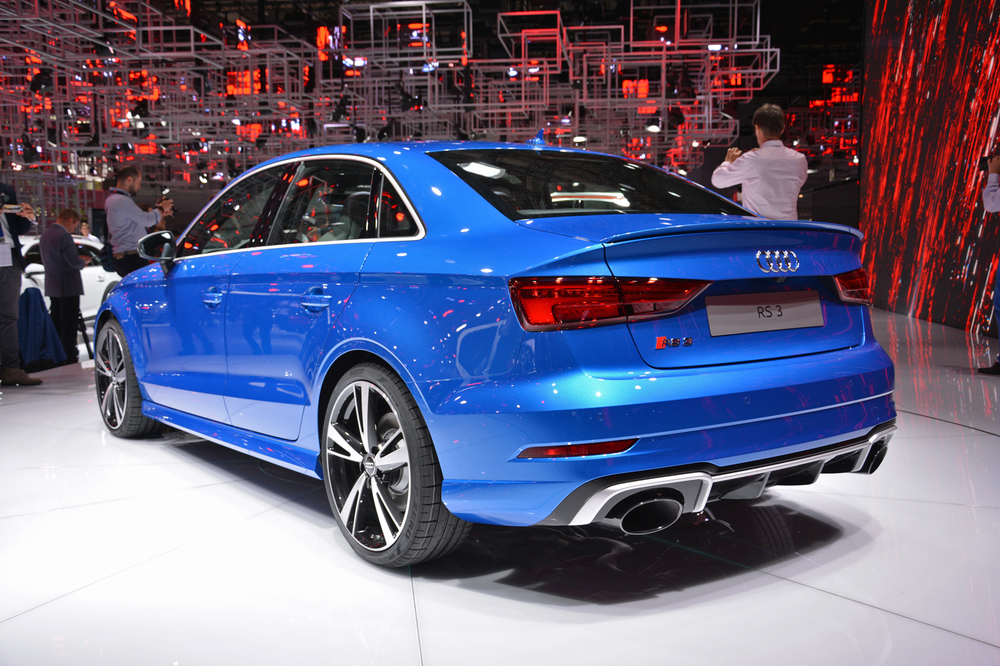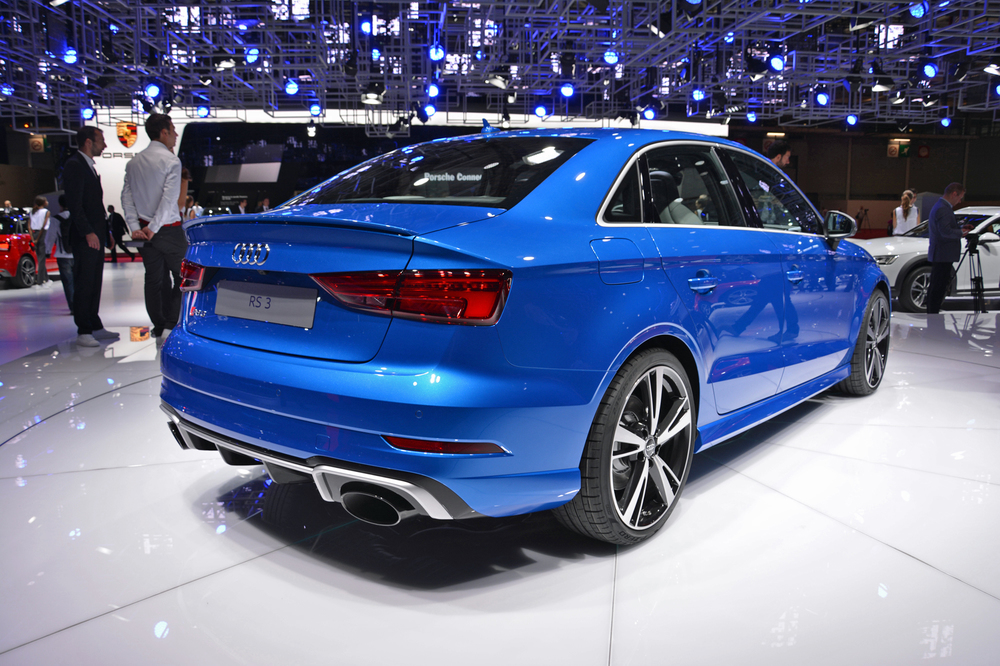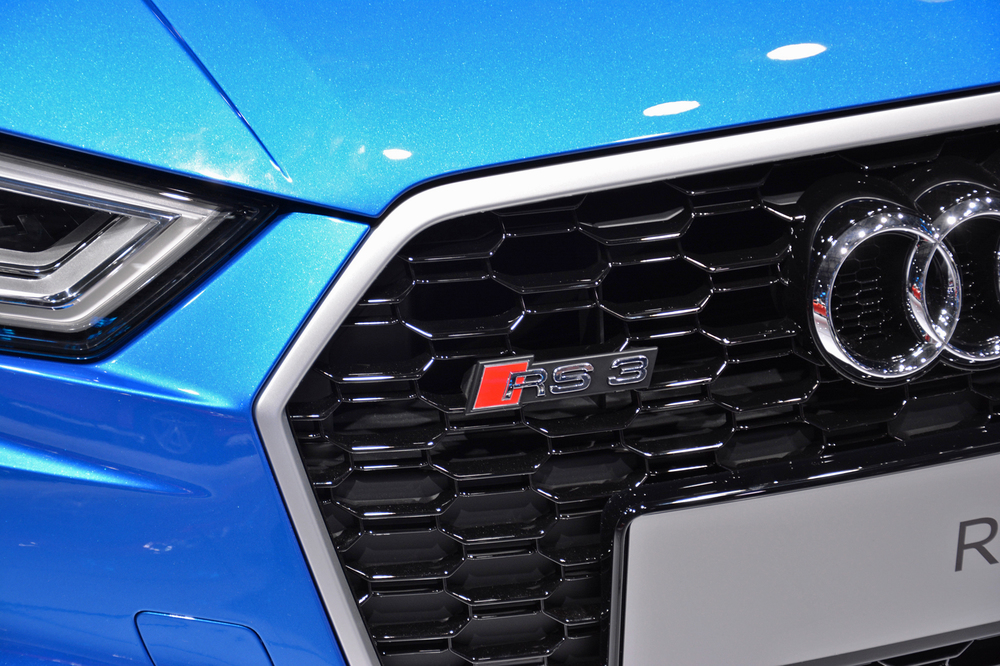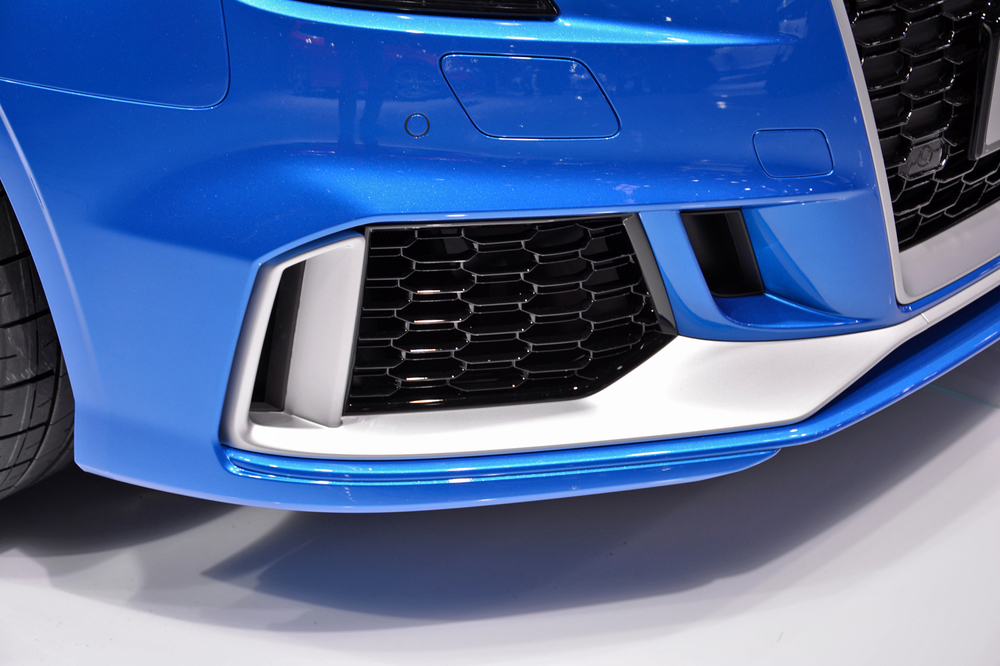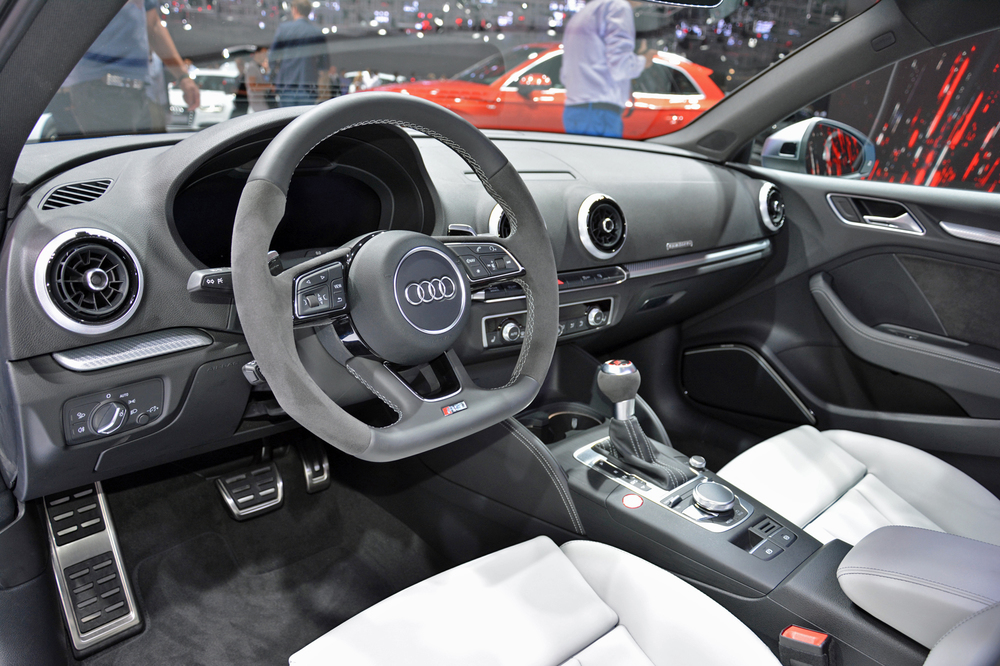It’s a shame the phrase “big things come in small packages” is a cliché, because it perfectly describes the new Audi RS 3 unveiled at the 2016 Paris Motor Show. This compact sedan packs the powertrain from Audi’s TT RS sports car. Because it uses the A3 sedan body, there’s also a good chance that, unlike most RS models, this one will make it to the U.S.
Here’s why you’ll want that to happen. The RS 3 boasts a 2.5-liter turbocharged five-cylinder engine, producing 400 horsepower and 354 pound-feet of torque. That power is harnessed by a seven-speed dual-clutch transmission and all-wheel drive. Audi says the RS 3 will do 0 to 62 mph in 4.1 seconds, while the top speed is electronically limited to 155 mph. Audi will raise that limit to 174 mph upon request, though.
The RS 3 gets many other performance upgrades as well. It rides lower to the ground than a standard A3, with adaptive suspension available as an option. It also boasts larger brakes (with the option for carbon ceramics), and model-specific stability control tuning. The Audi Drive Select system includes multiple driving modes that alter the behavior of the suspension, steering, engine management, and exhaust.
To match the performance hardware underneath, the RS 3 boasts more aggressive styling. Both the front and rear tracks were widened compared to the A3, and the RS 3 has a snarling new front fascia, with a chin spoiler and air intakes upon air intakes. The interior is trimmed in Nappa leather and features an RS-specific flat-bottom steering wheel. Sport seats with more substantial bolstering are available as well.
Read more: Ferrari LaFerrari Aperta convertible debuts in Paris
While it was designed as a hardcore performance car, the RS 3 still features plenty of tech. Audi’s MMI infotainment system with touchpad and Virtual Cockpit display are both available, the latter replacing the gauge cluster with a configurable 12.3-inch digital display. Audi will also offer its traffic jam assist system on the RS 3. It takes over steering in heavy traffic at speeds up to 37 mph, which, when combined with Audi’s other driver assistance systems, creates something roughly equivalent to Tesla’s Autopilot.
Audi hasn’t confirmed whether the new RS 3 will be sold in the U.S., but it has a better chance than the last version, which used a hatchback body style. The sedan body was created largely to boost appeal on this side of the Atlantic, so Audi’s decision to use it indicates it has U.S. sales in mind for the RS 3.
Editors' Recommendations
- Lexus unveils its first electric car, but it’s unlikely to be sold in the U.S.
- The 2020 Audi RS Q3 is a souped-up SUV you’ll have to admire from afar
- 2020 Audi S6 sedan with performance-enhancing mild-hybrid tech will come to U.S.
